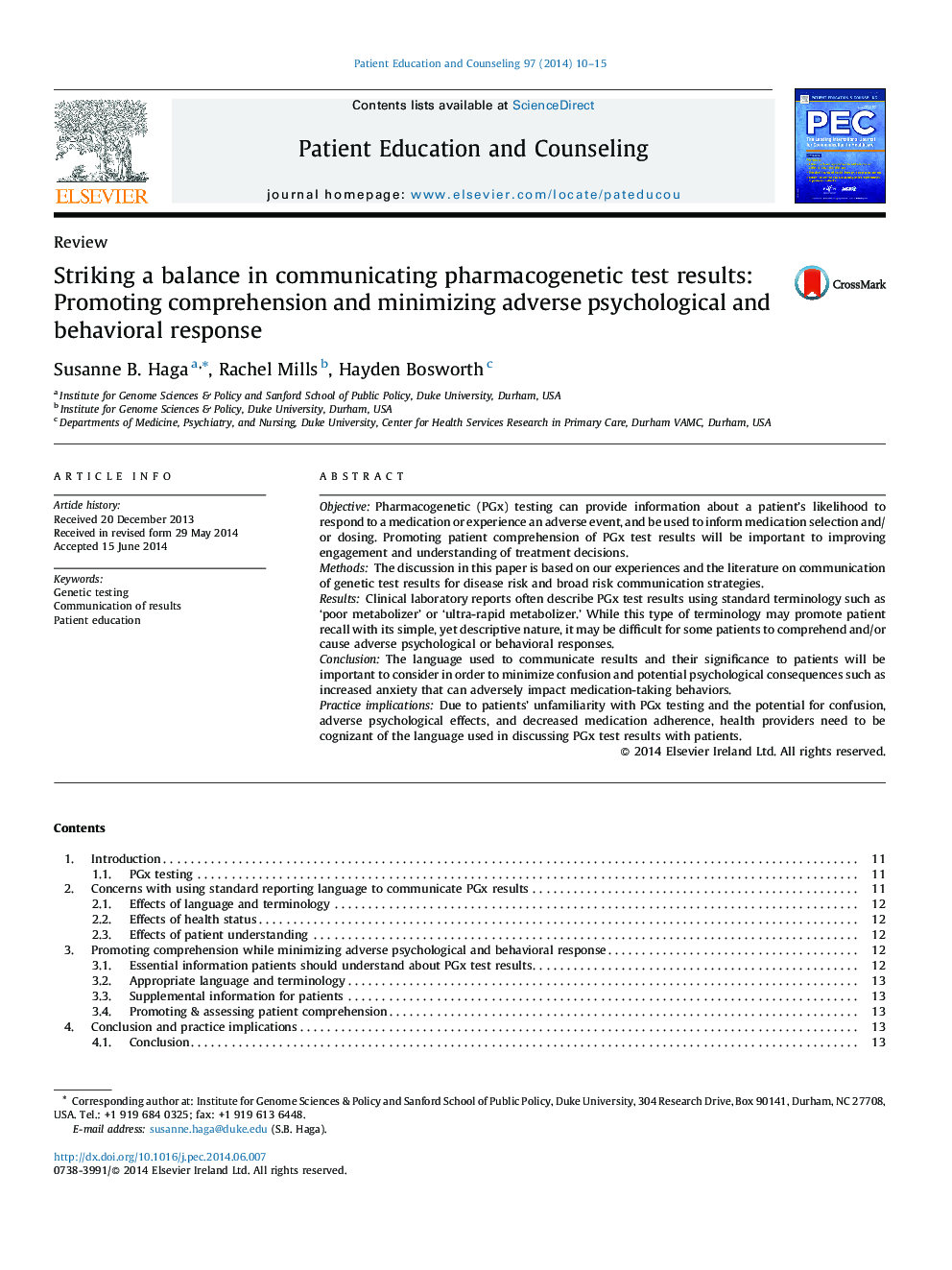| Article ID | Journal | Published Year | Pages | File Type |
|---|---|---|---|---|
| 6153999 | Patient Education and Counseling | 2014 | 6 Pages |
â¢Pharmacogenetic (PGx) testing assesses variation in genes associated with drug response.â¢Communicating PGx test results may be challenging due to complexity of result.â¢Categorical labels like “poor metabolizer” are often used and may be misinterpreted.â¢Adverse psychological responses and medication behaviors may result from such labels.â¢We recommend that providers avoid stigmatizing terms to describe results.
ObjectivePharmacogenetic (PGx) testing can provide information about a patient's likelihood to respond to a medication or experience an adverse event, and be used to inform medication selection and/or dosing. Promoting patient comprehension of PGx test results will be important to improving engagement and understanding of treatment decisions.MethodsThe discussion in this paper is based on our experiences and the literature on communication of genetic test results for disease risk and broad risk communication strategies.ResultsClinical laboratory reports often describe PGx test results using standard terminology such as 'poor metabolizer' or 'ultra-rapid metabolizer.' While this type of terminology may promote patient recall with its simple, yet descriptive nature, it may be difficult for some patients to comprehend and/or cause adverse psychological or behavioral responses.ConclusionThe language used to communicate results and their significance to patients will be important to consider in order to minimize confusion and potential psychological consequences such as increased anxiety that can adversely impact medication-taking behaviors.Practice implicationsDue to patients' unfamiliarity with PGx testing and the potential for confusion, adverse psychological effects, and decreased medication adherence, health providers need to be cognizant of the language used in discussing PGx test results with patients.
